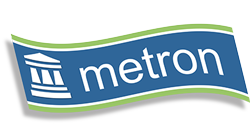As promised
today I’ll be dealing with the TOP 5 Don’ts for VMware.
DON’T
1)
CPU
Overcommit (unless over ESX Host usage is <50%). Why? I’m sure
that most of you would have heard of CPU Ready Time? CPU Ready Time is
the time spent (msecs) that a guest vCPUs are waiting run on the ESX Hosts
physical CPUs. This wait time can occur due to the co-scheduling
constraints of operating systems and a higher CPU scheduling demand due to an
overcommitted number of guest vCPUs against pCPUs. The likelihood is that
if all the ESX hosts within your environment have on average a lower CPU usage
demand, then overcommitting vCPUs to pCPUs is unlikely to see any significant
rise in CPU Ready Time or impact on guest performance.
2)
Overcommit
virtual memory to the point of heavy memory reclamation on the ESX host.
Memory overcommitment is supported within your vSphere environment by a
combination of Transparent Page Sharing, memory reclamation (Ballooning &
Memory Compression) and vSwp files (Swapping). When memory reclamation
takes place it incurs some memory management overhead and if DRS is enabled
automatically, an increase in the number of vMotion migrations.
Performance at this point can degrade due to the increase in overhead required
to manage these operations.
3)
Set
CPU or Memory limits (unless absolutely necessary). Why? Do you
really need to apply a restriction on usage to a guest or set of guests in a
Resource Pool? By limiting usage, you may unwittingly restrict the
performance of a guest. In addition, maintaining these limits incurs
overhead, especially for memory, where the limits are enforced by Memory
Reclamation. A better approach is to perform some proactive monitoring to
identify usage patterns and peaks, then adjust the amount of CPU (MHz) and
Memory (MB) allocated to your guest virtual machine. Where necessary
guarantee resources by applying reservations.
4)
Use
vSMP virtual machines when running single-threaded workloads. Why?
vSMP virtual machines have more than one vCPU assigned. A single-threaded
workload running on your guest will not take advantage of those “extra”
executable threads. Therefore extra CPU cycles used to schedule those
vCPUs will be wasted.
5)
Use
64-bit operating systems unless you are running 64-bit applications.
Why? 64-bit virtual machines require more memory overhead than 32-bit
ones. Compare the benchmarks of 32/64-bit applications to determine
whether it is necessary to use the 64-bit version.
If you want
more information on performance and capacity management of VMware visit our
website and sign up to be part of our community, being a community member
provides you with free access to our library of white papers and podcasts.
http://www.metron-athene.com/_downloads/index.html or visit our capacity management channel on YouTube http://www.youtube.com/user/35Metron?blend=1&ob=0
I'm at CMG Las Vegas next week and hope to meet up with some of you there.
I'm at CMG Las Vegas next week and hope to meet up with some of you there.
Jamie
Baker
Principal
Consultant